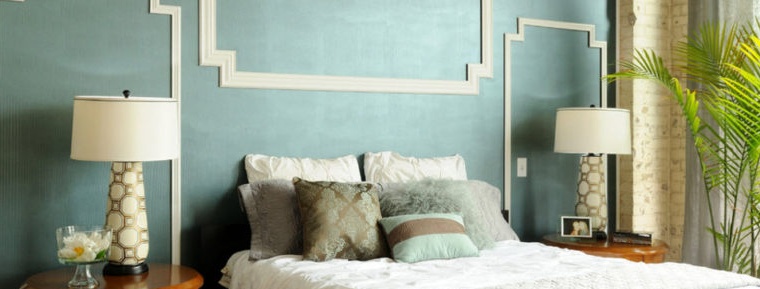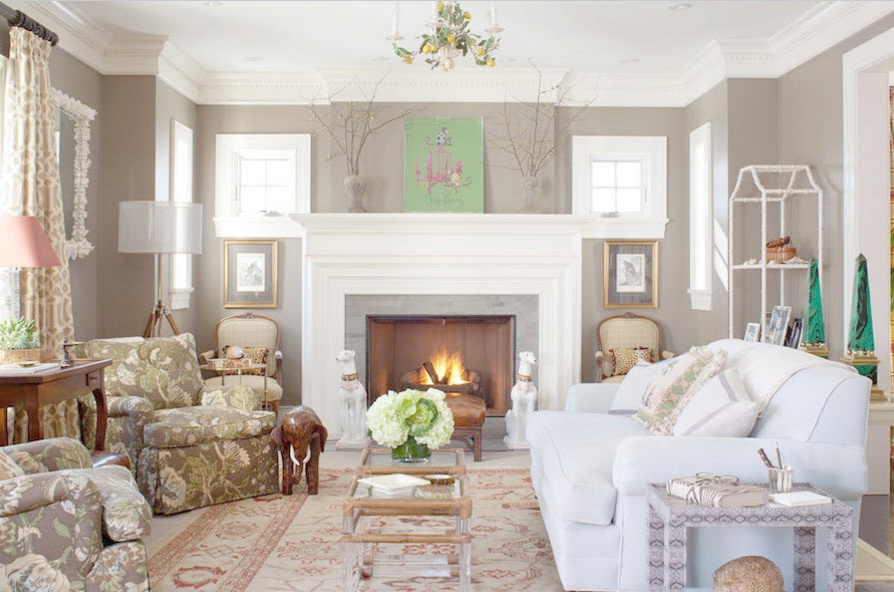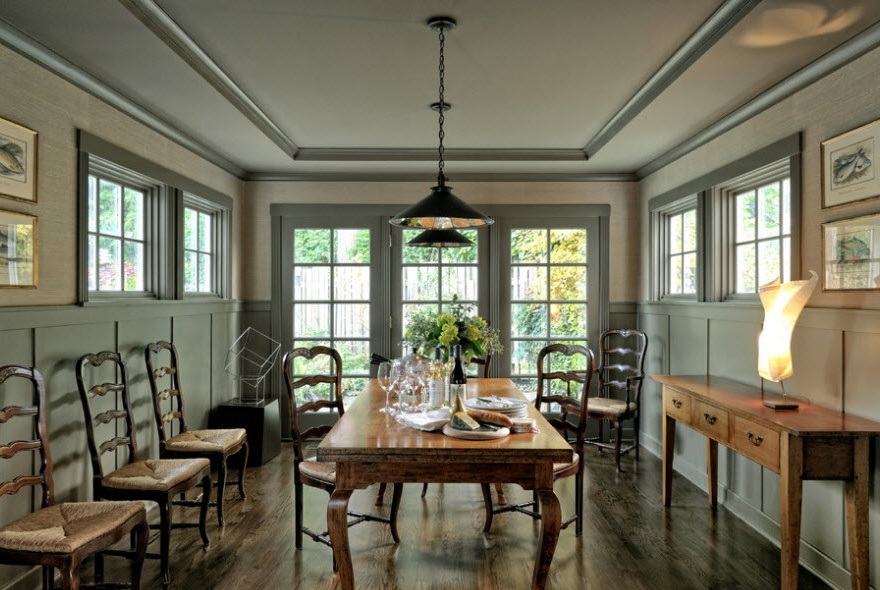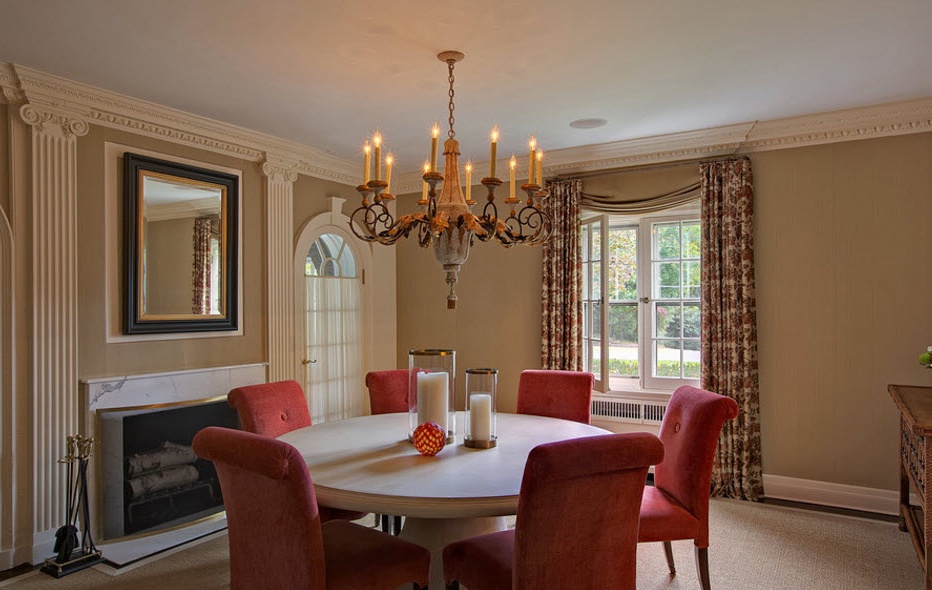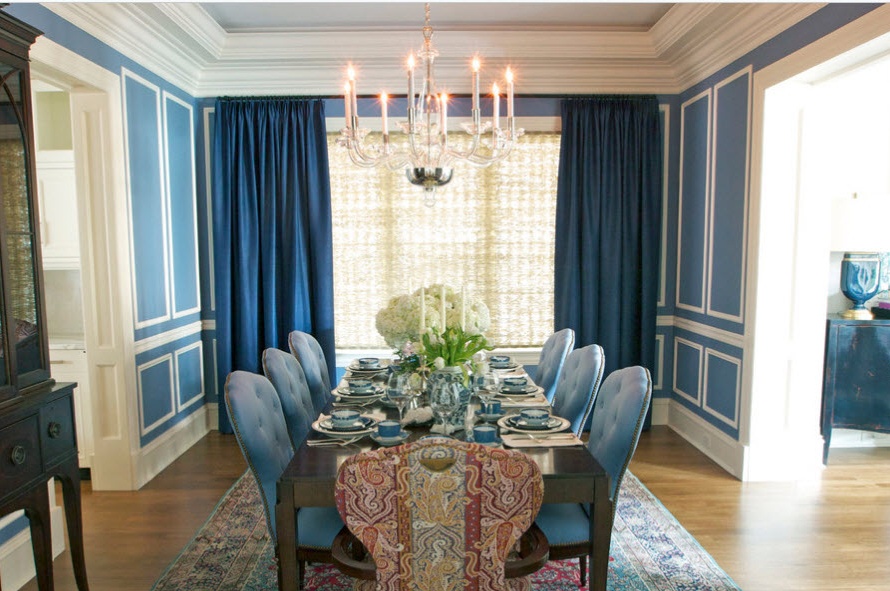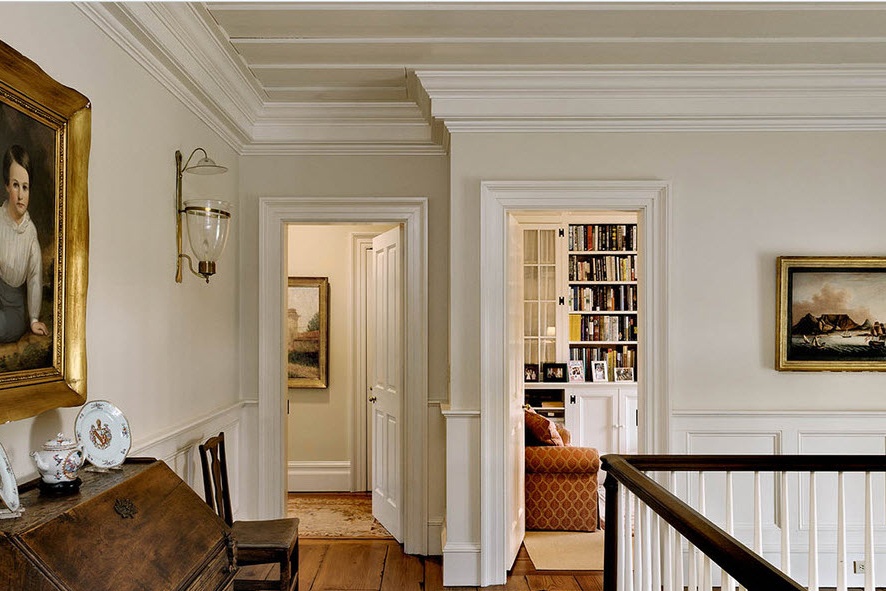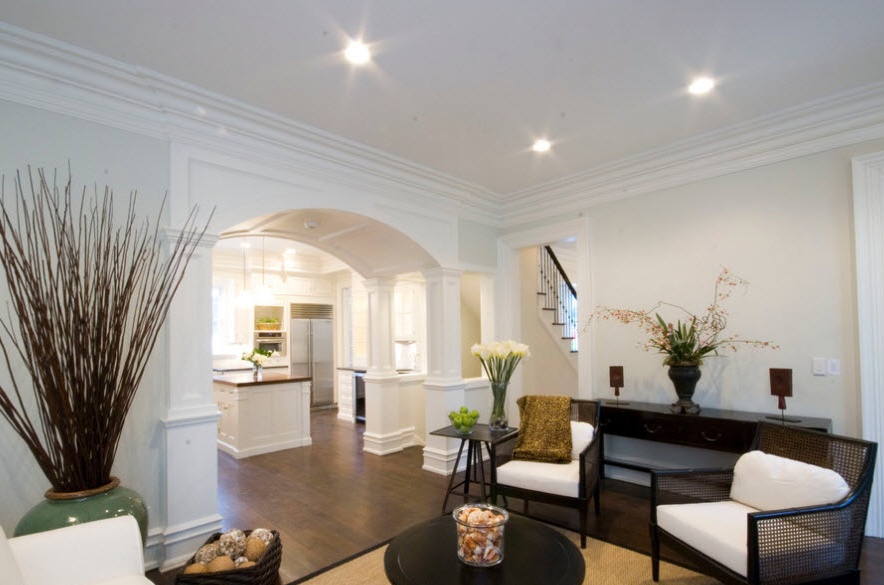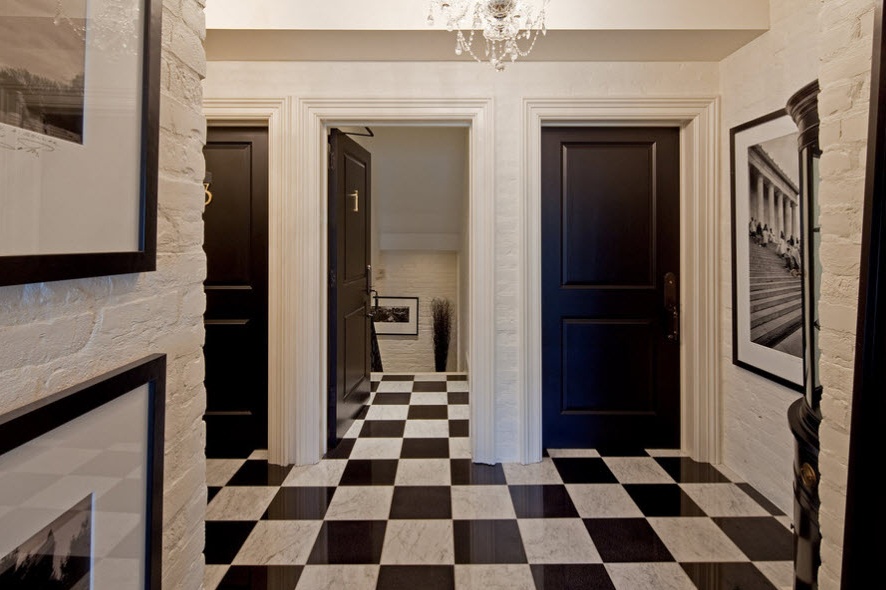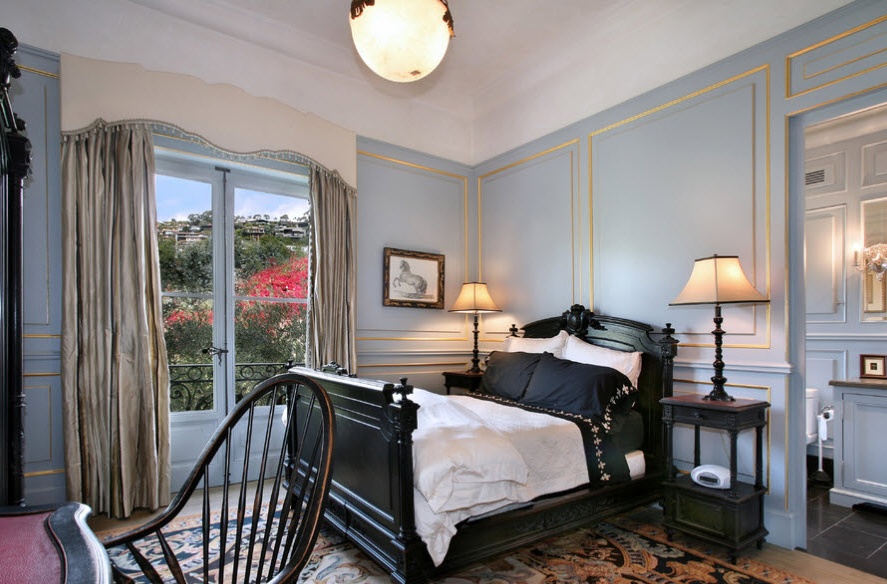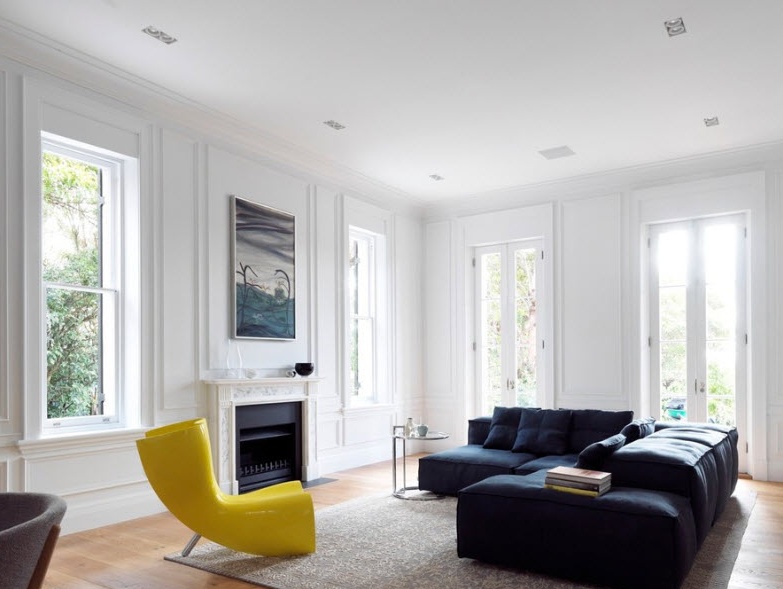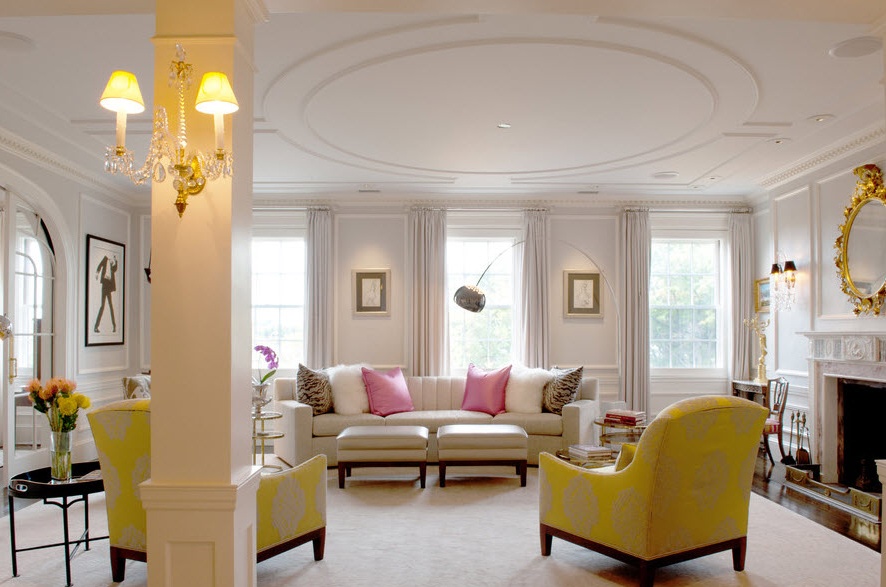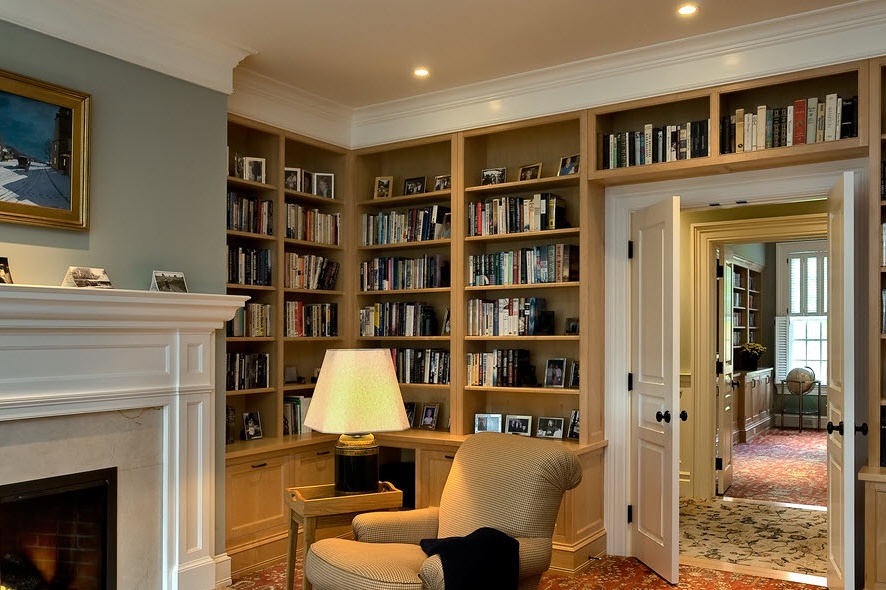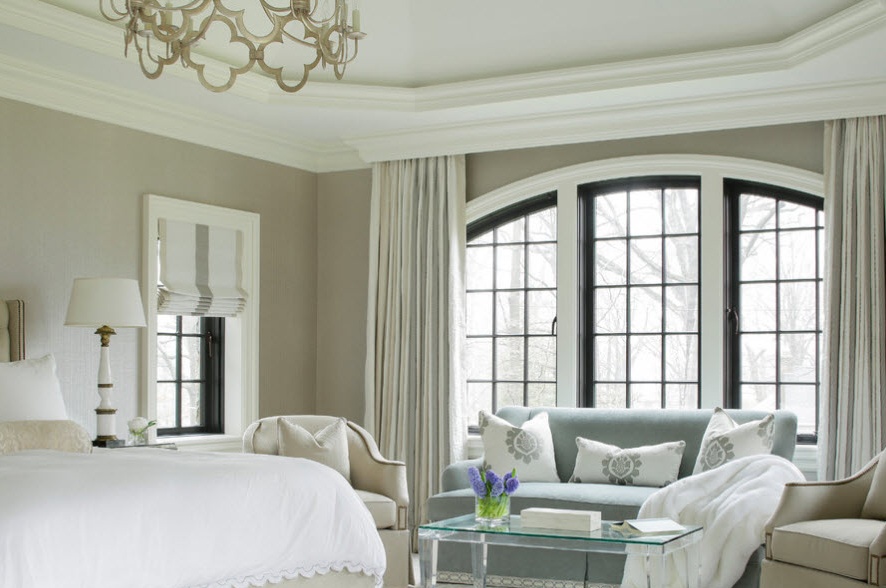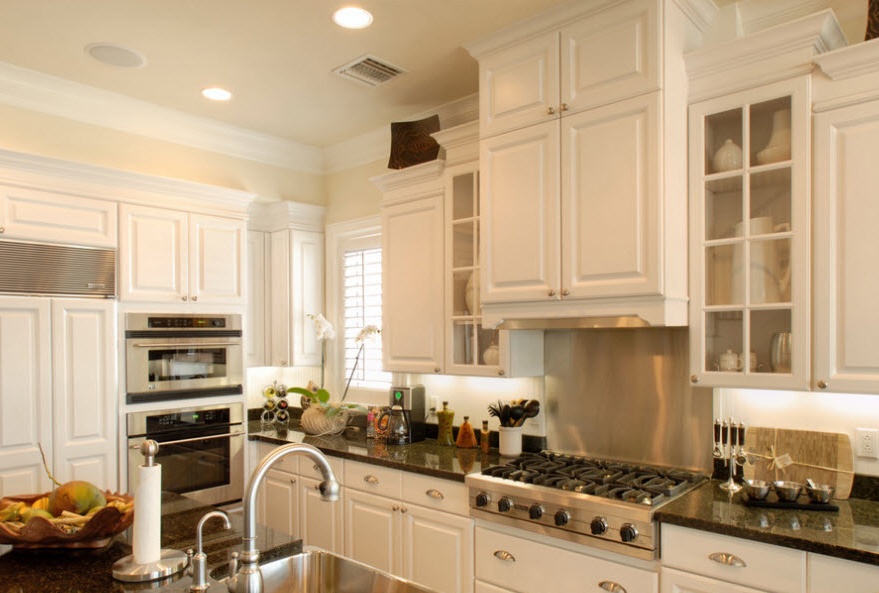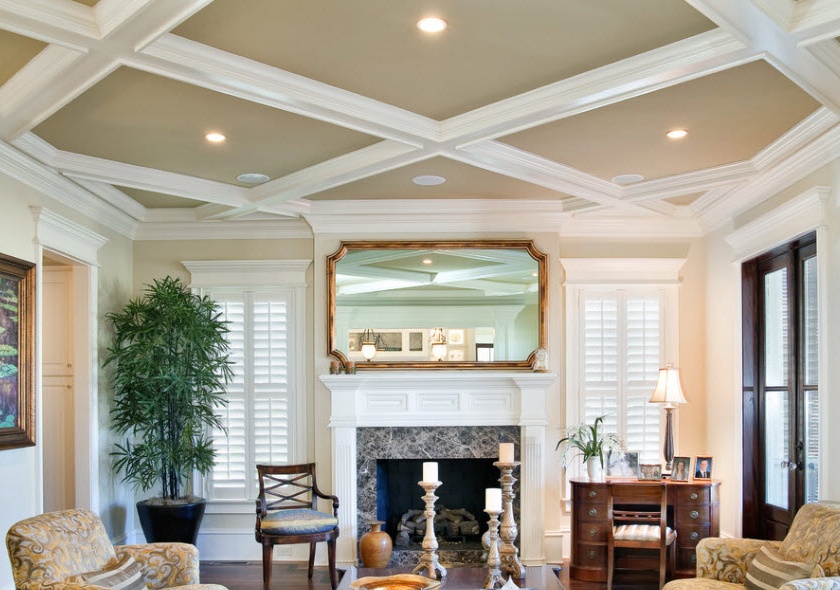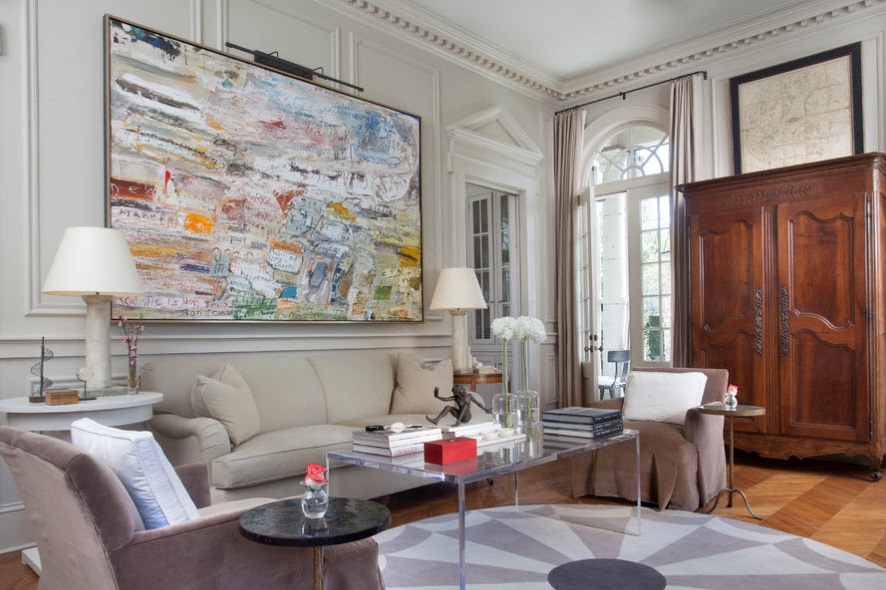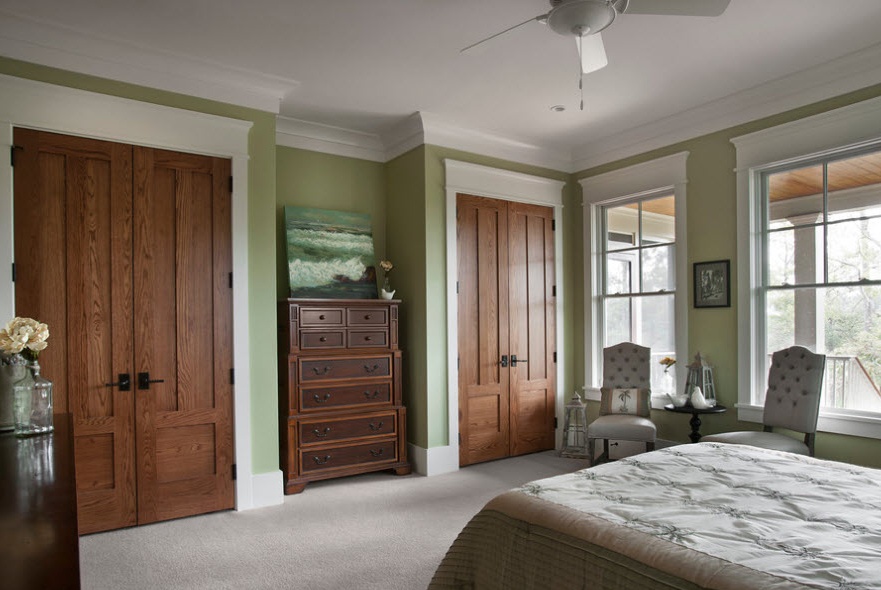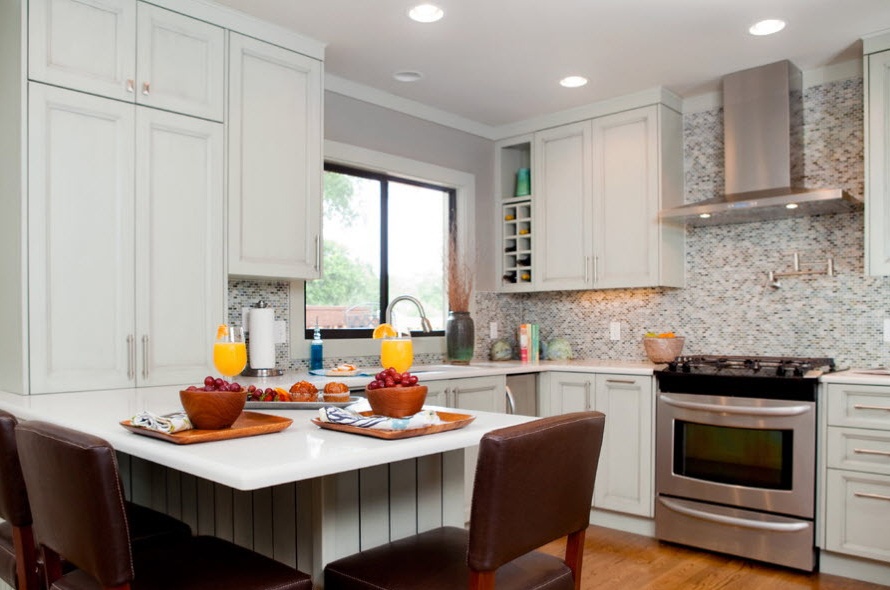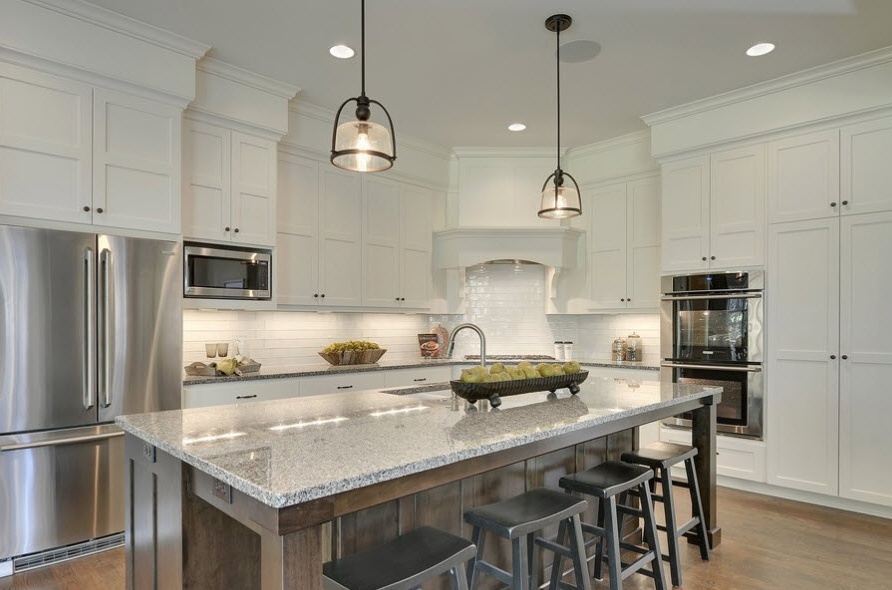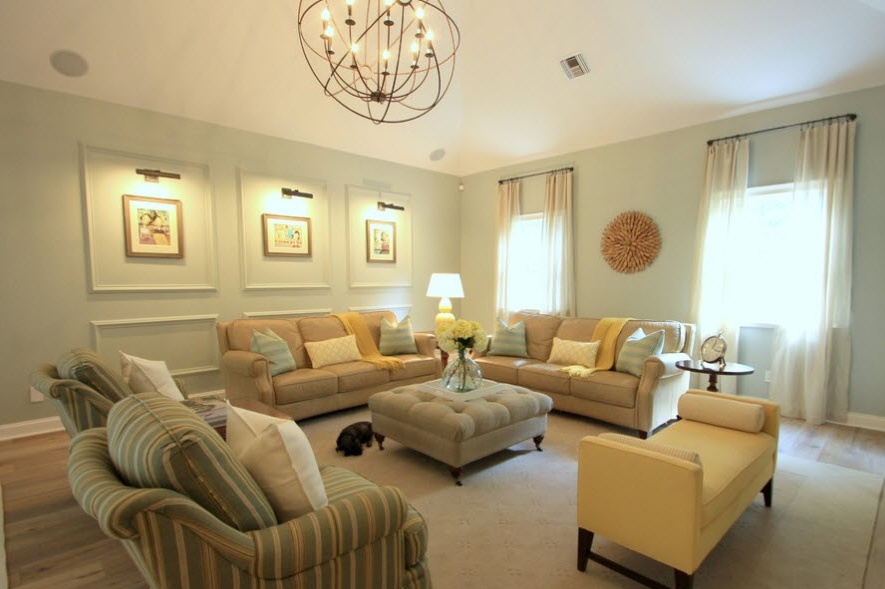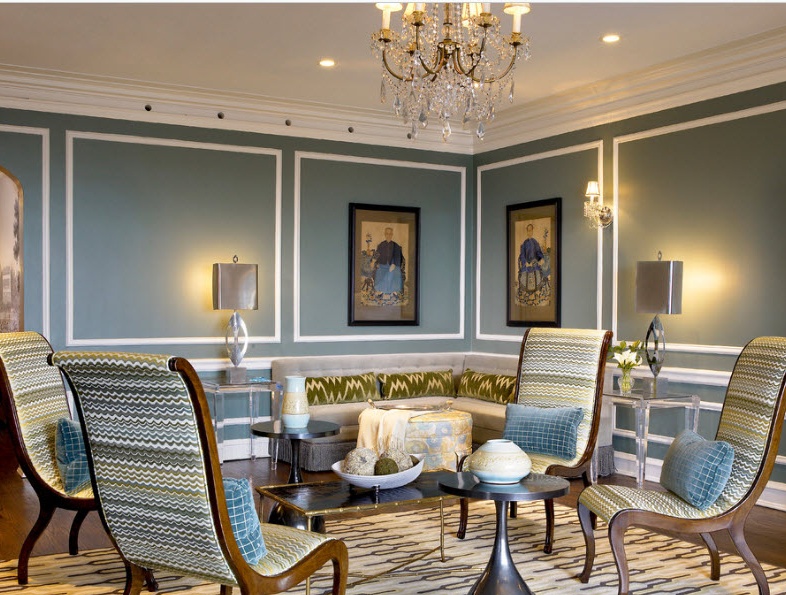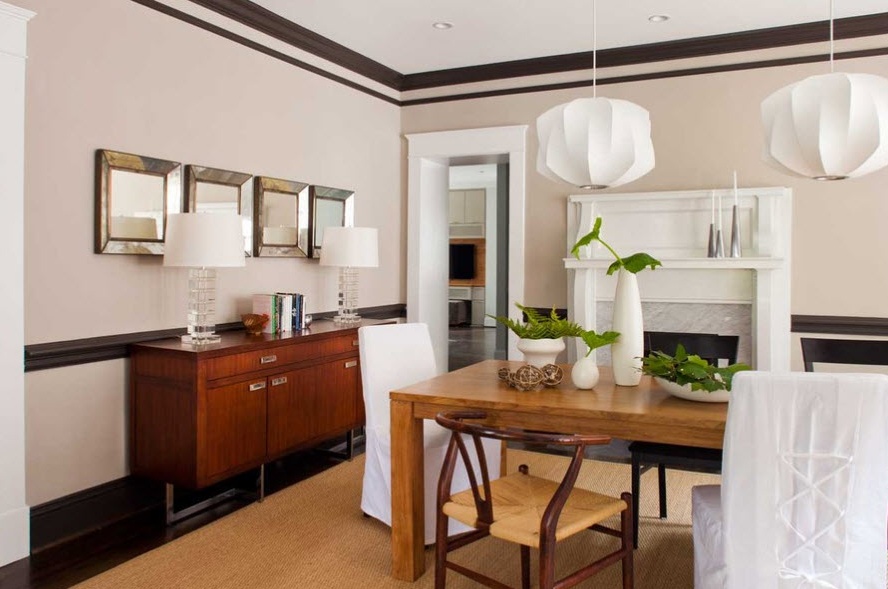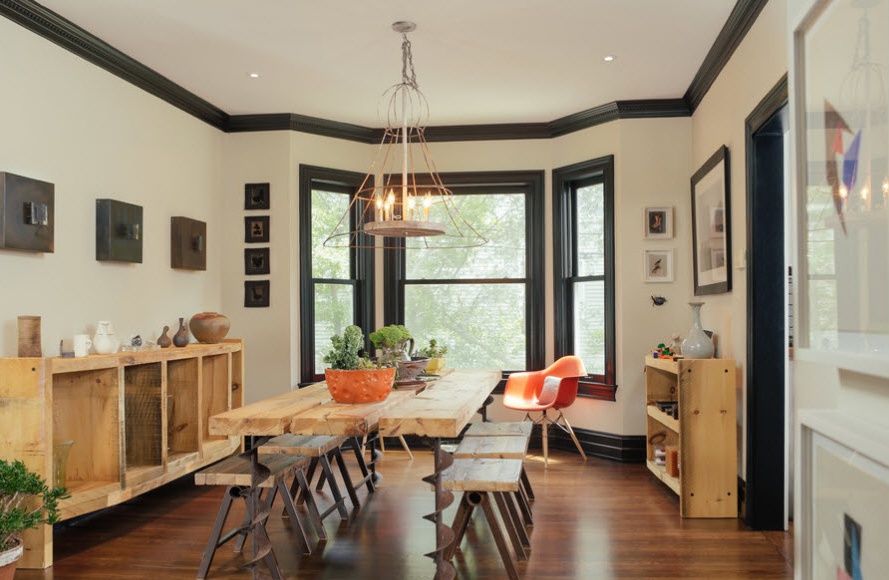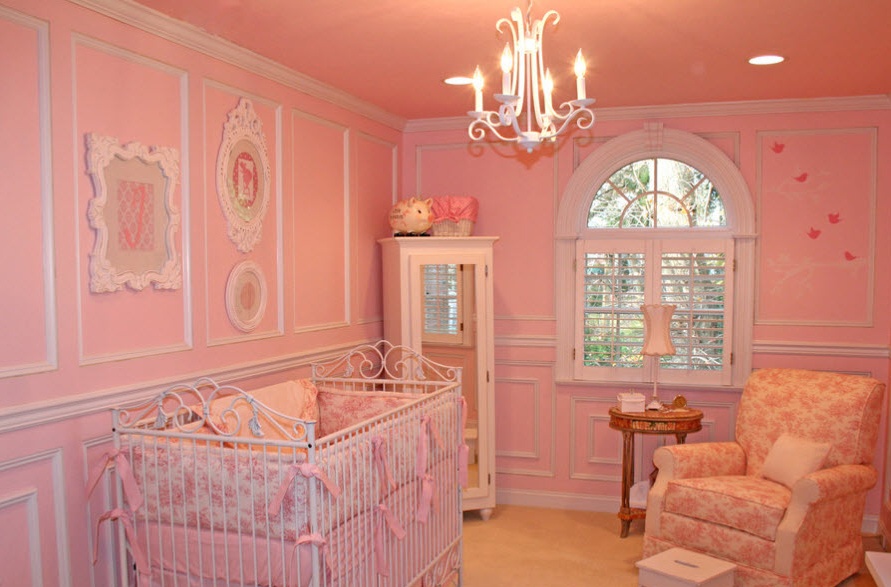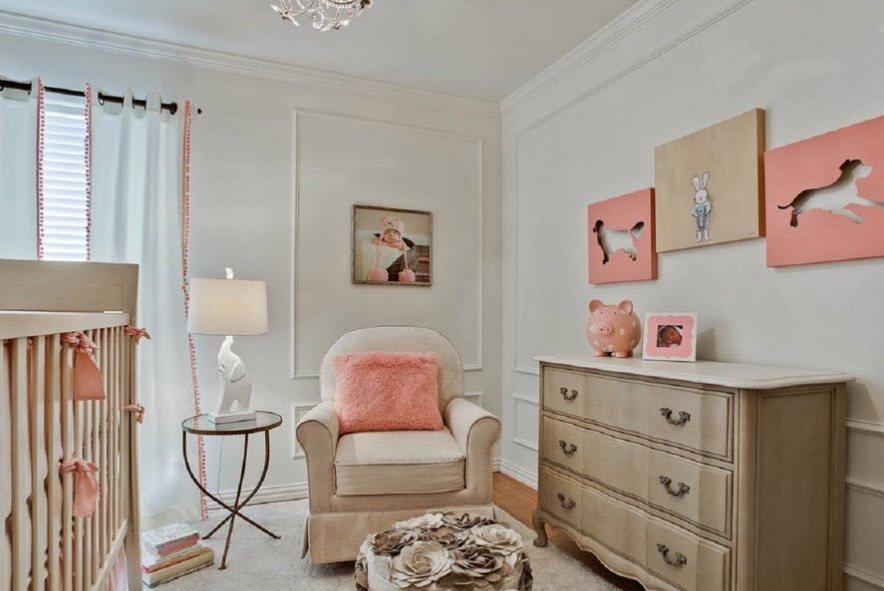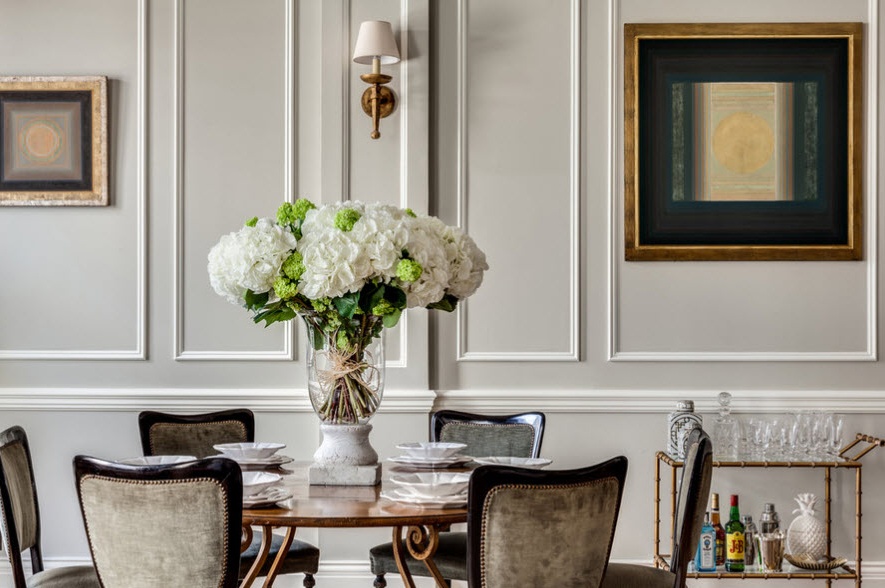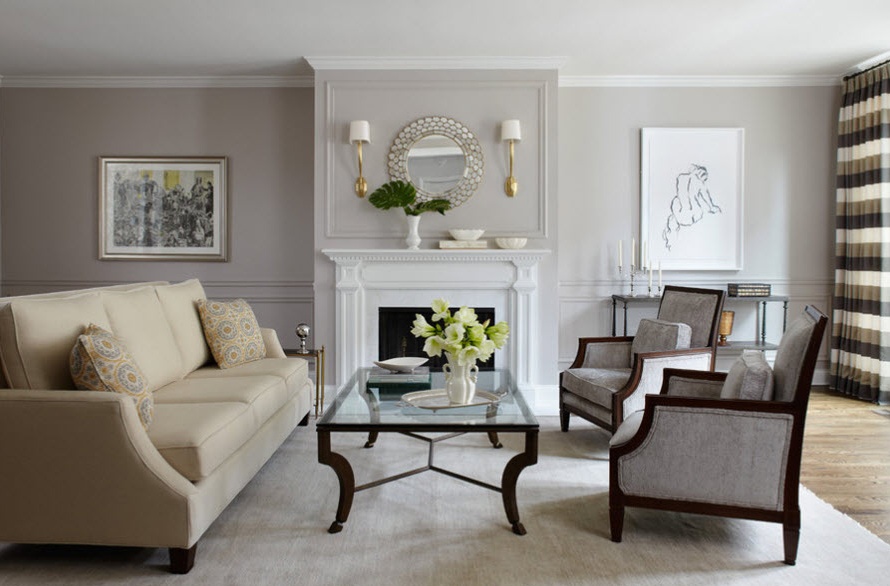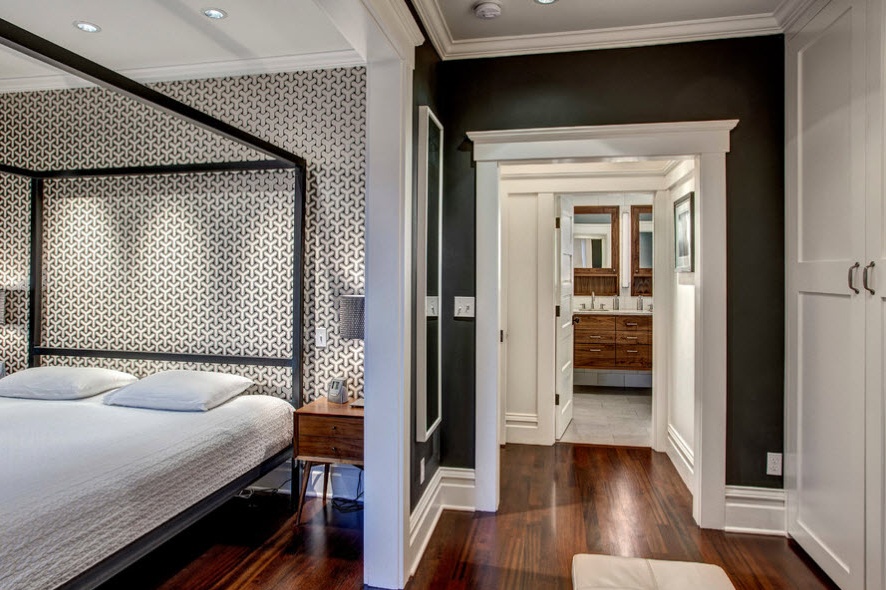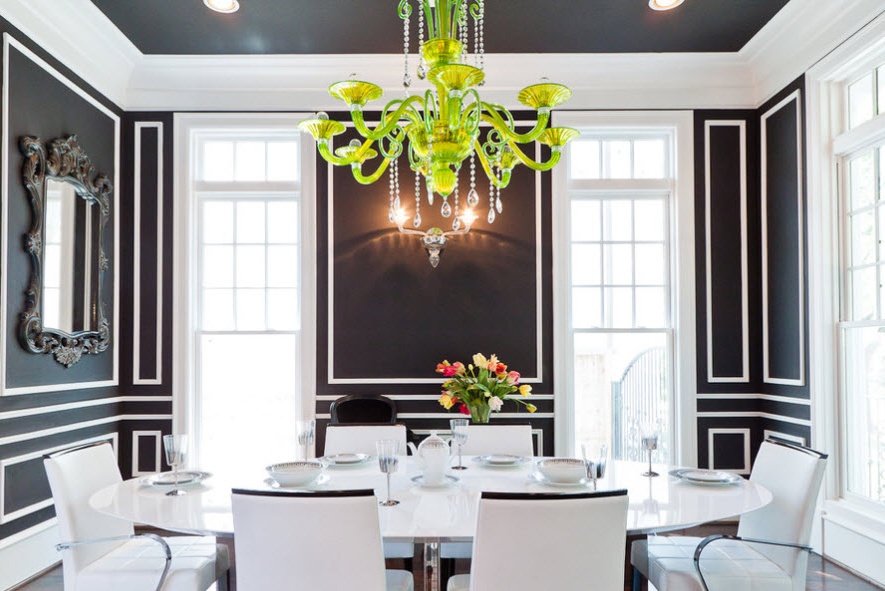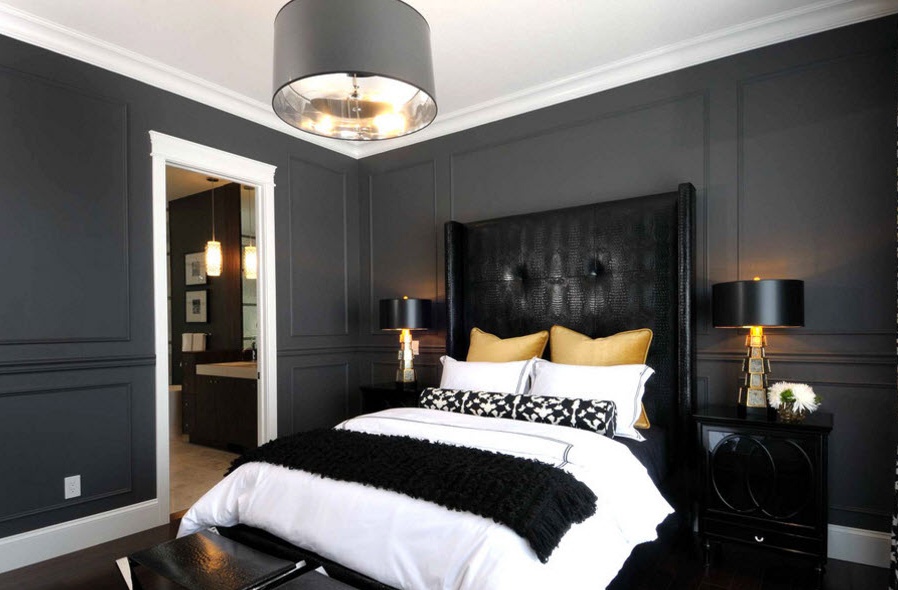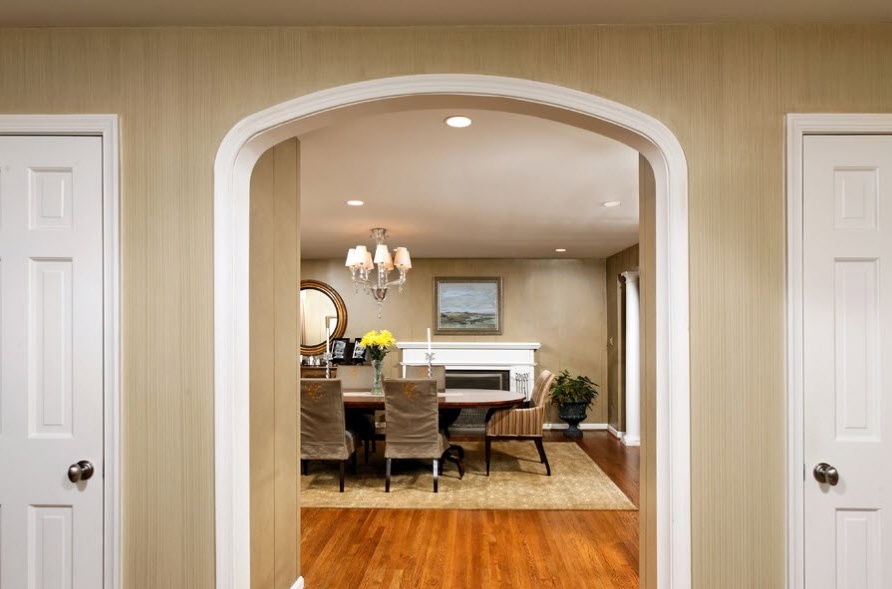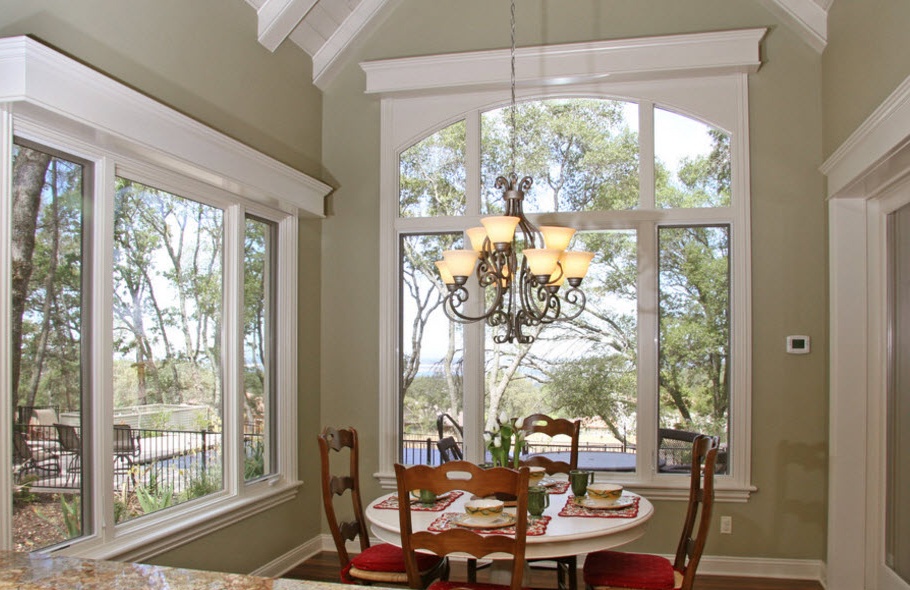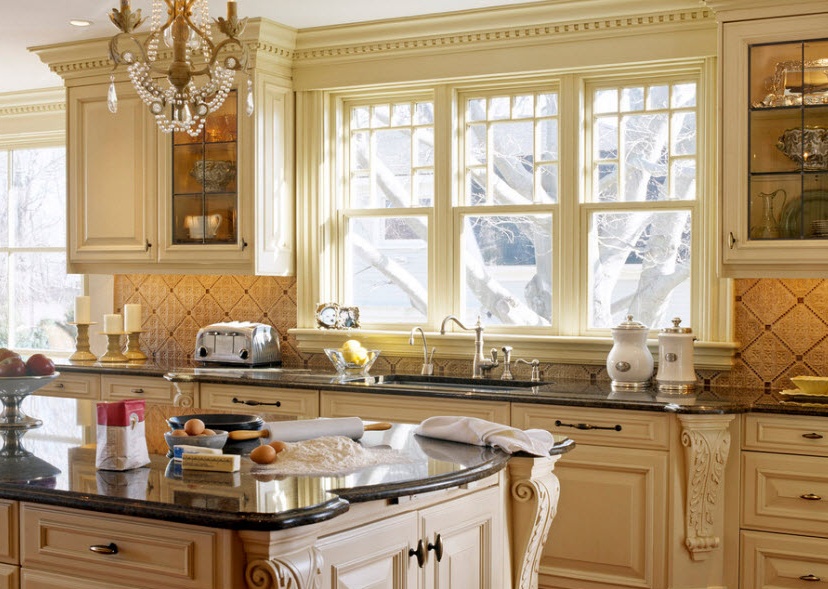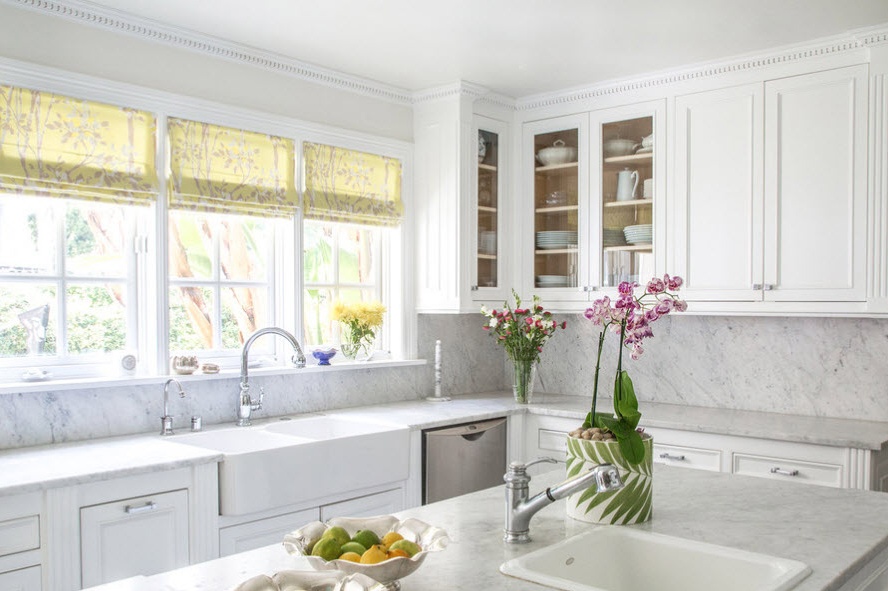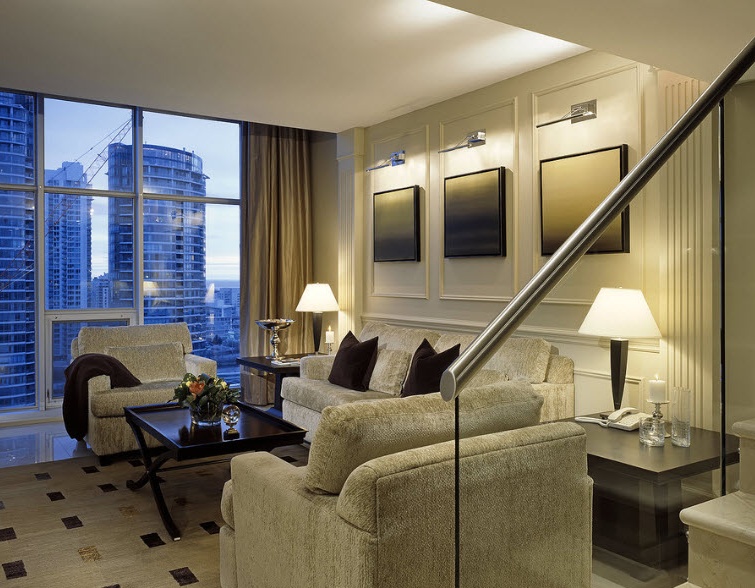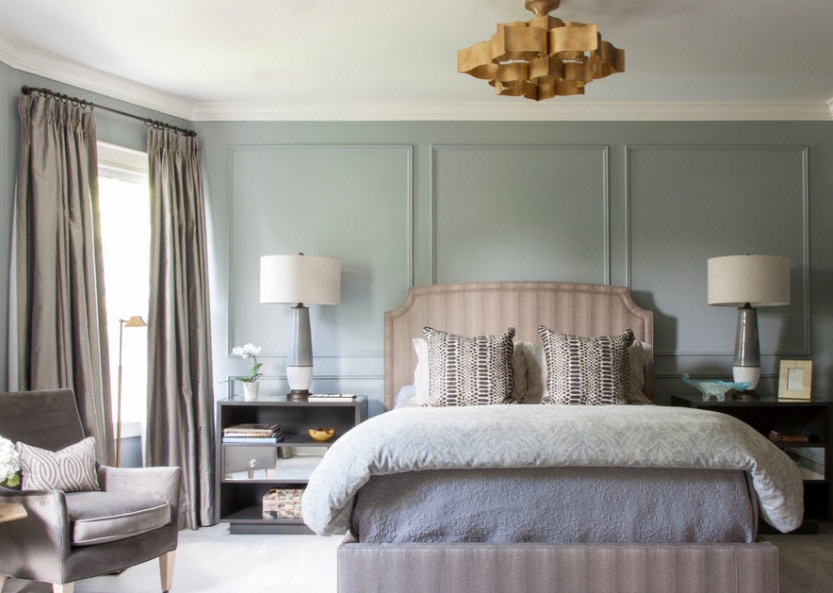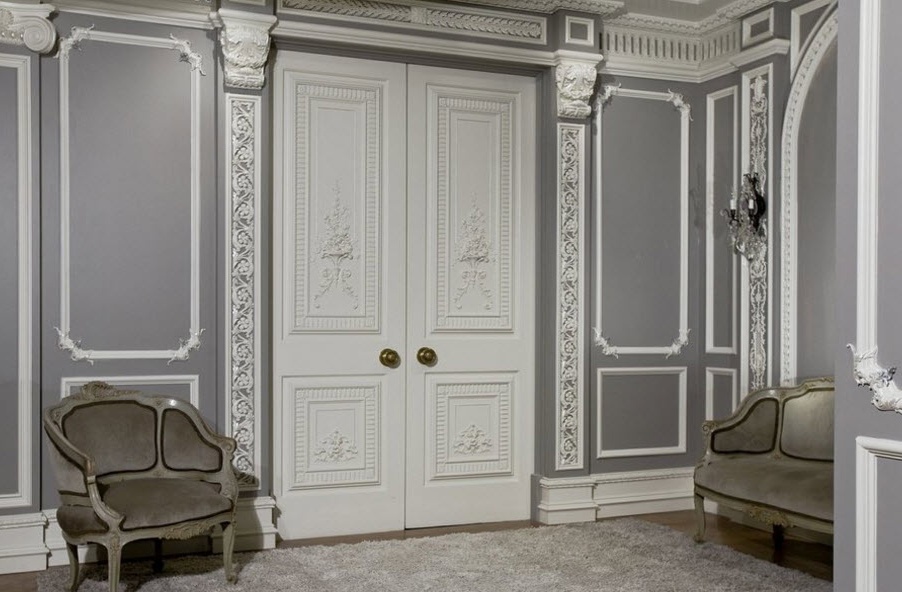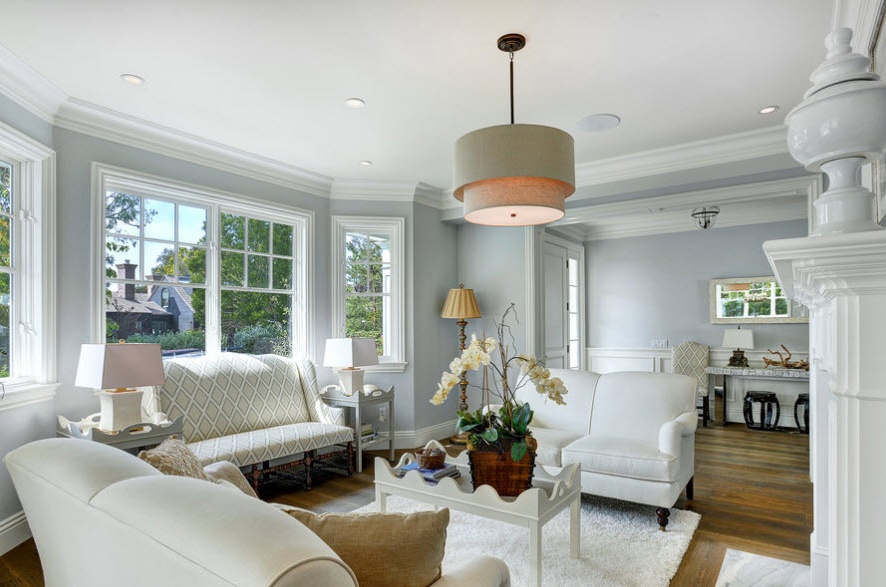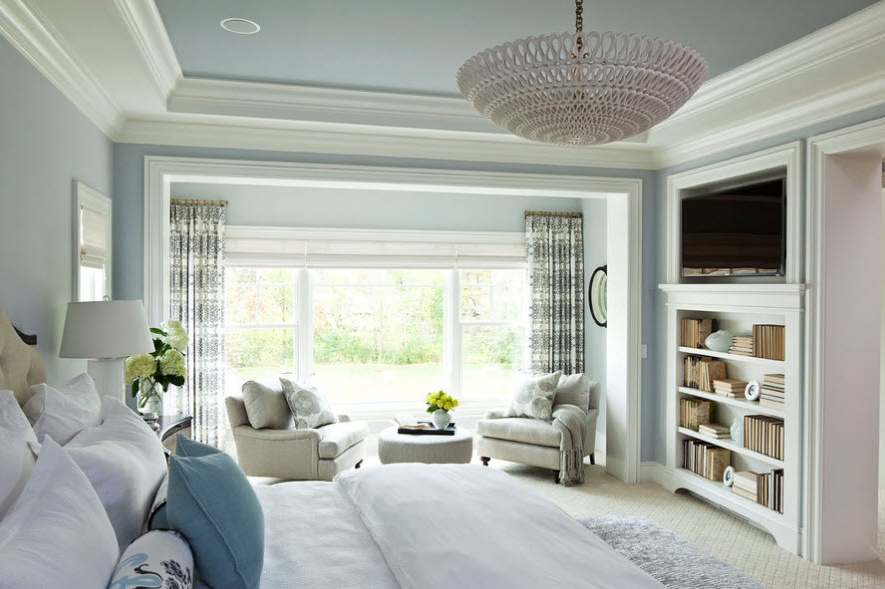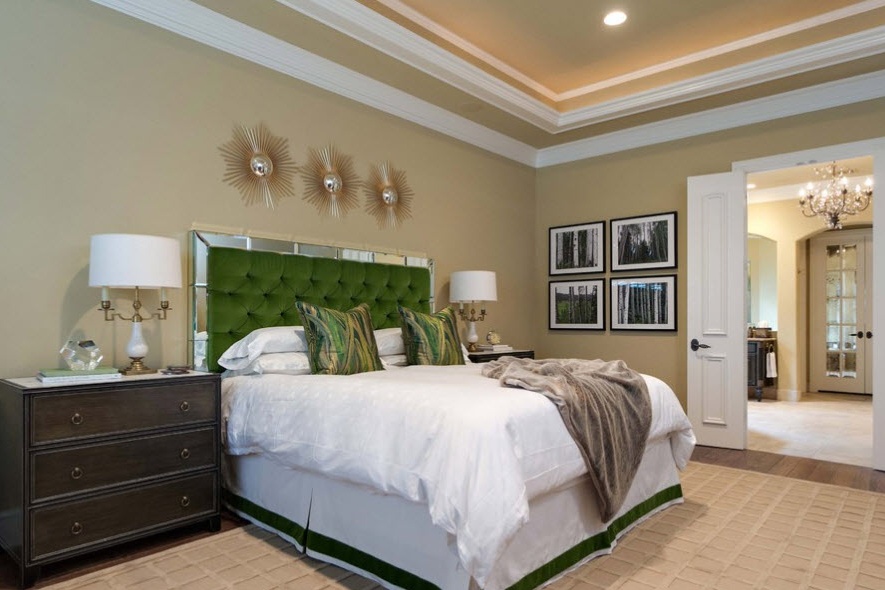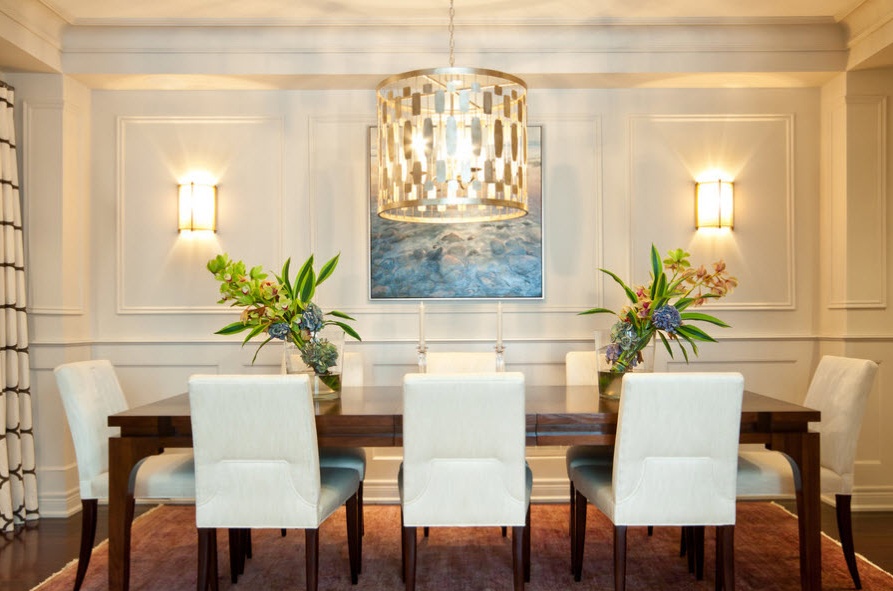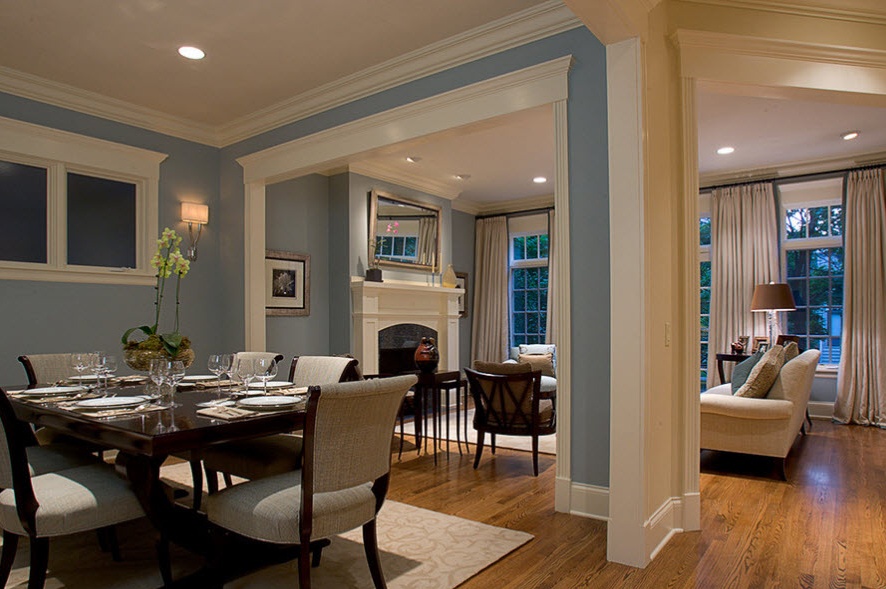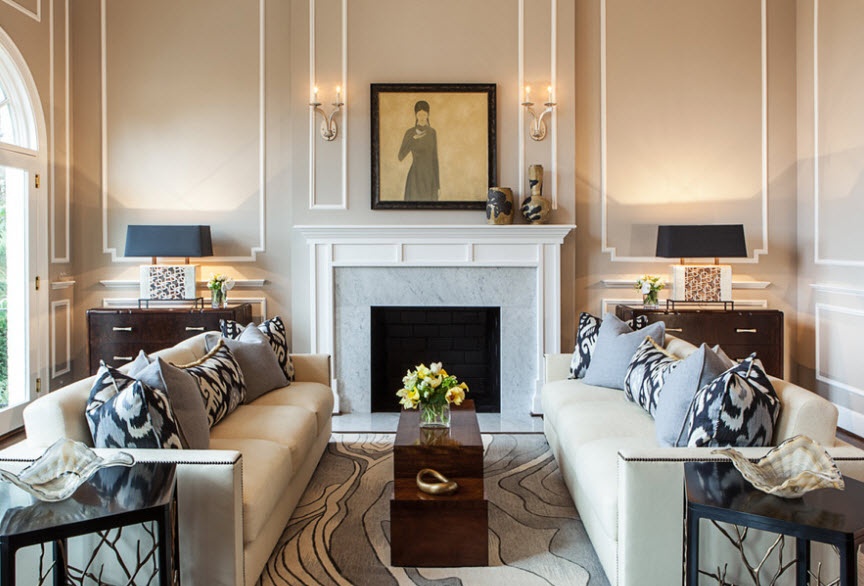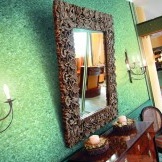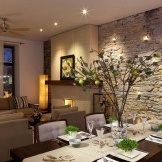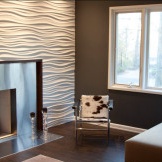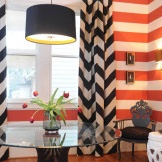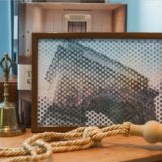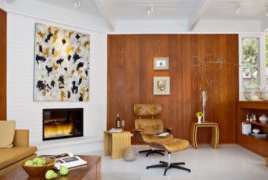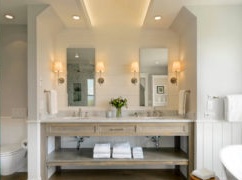Moldings: 100 ideas for interior use
Molding in a modern interior is a multifunctional part that can perform the functions of a decorative element, hide design or surface imperfections, zone a room or separate various finishing materials from each other, protect corners and joints from damage. At the same time, molding today is an effective replacement for stucco molding, which allows at a low cost to add notes of luxury and respectability to the design of the premises. In this collection, we suggest that you familiarize yourself with the options for the execution of moldings, the choice of material and method of attachment on the example of an extensive selection of photos with hundreds of interesting design projects.
Material for the manufacture of moldings
Modern stores of finishing materials offer us a wide selection of moldings of various modifications. They differ primarily in the materials of manufacture. Consider the types of moldings, based on the material of execution, classifying models from the lightest to the heaviest.
Foam and plastic moldings. This is the most popular type of decorative decoration elements. Such decor was widely used due to its low cost, low weight and resistance to moisture. Polyfoam and plastic moldings can be used in rooms with any microclimate and functional purpose. But these elements are not without drawbacks - foam products are more susceptible to damage, have low strength and wear resistance.
Polyurethane moldings. Products are gaining popularity day by day. And this is due to the flexibility of products, ease of installation, sufficiently high strength and durability. A relatively low cost attracts buyers and allows you to "turn a blind eye" to low environmental friendliness.
Moldings made of natural wood. Beautiful natural pattern and naturalness of the material will always attract buyers. The absence of toxic secretions, the possibility of use even in children's rooms and high aesthetic qualities wish the wood material at all times, despite the availability of cheaper artificial analogues.
Moldings made of marble, metal and plaster. Beautiful, luxurious, natural - there are a lot of epithets for such products. They are able to truly decorate the classic style of decoration of any room. But the high price and heavy weight of the designs do not help them increase their popularity for use in the design of living spaces. Such moldings are most often used for the restoration of historical interiors or for the creation of very expensive design projects for spacious rooms in baroque style sets.
I would like to single out a separate group self-adhesive moldings. Most often, they are made of rubberized plastic material and are used to join the bath and the surface of the wall with decoration. Groove molding, which is most often used as a decorative element, has gained not less popularity.
Classification of moldings for a modern interior
The variety of modern moldings is impressive. This is not only planks for decorating walls and separating finishing materials among themselves. Floor and ceiling skirting boards, mirror frames, decorative elements on furniture, trim for doors and windows, cornices and panels - these are all moldings. A variety of modifications attracted and a wide range of places for use - moldings are used not only for surface finishing of premises, but also for decoration of furniture, various designs.
Ceiling moldings
A familiar element for many of us is the separation of the surfaces of the ceiling and the wall, often called the ceiling plinth. Sometimes this molding is called canisis.In any case, the ceiling molding allows you to make the most aesthetic transition from the ceiling to the walls and hide the flaws of the finish, create a clearer border between the finish materials and outline the geometry of the room.
Conventionally, all ceiling moldings can be divided into simple and complex. The name speaks for itself - simple models are laconic in design, complex ones have stucco decoration or multi-tiered execution. Also, all ceiling moldings vary in width - this value can range from a couple of centimeters to a couple of tens of centimeters. It all depends on the size of the room itself, the height of the ceiling and the style of interior design. For small rooms, it makes no sense to use complex and wide moldings, in spacious rooms, with high ceilings and elaborate interiors, the use of a ceiling decor with patterns and stucco molding will be justified.
Ceiling moldings can be made of the following materials:
- gypsum;
- tree;
- clay;
- polyurethane;
- polystyrene.
As practice shows, it is easier to work with moldings made of artificial materials. They have everything small, easy to install, and given that the decor on the ceiling is subject to the least mechanical stress and wear, such models can last quite a long time.
In a special group of ceiling moldings, I would like to highlight skirting boards that make up the joint of the ceiling and storage systems that adjoin it. Most often, built-in wardrobes or entire furniture sets act as such. To meet such a design in a modern kitchen will not amount to ore - many prefer to mount the upper tier of kitchen cabinets from the ceiling.
Floor moldings
The function of floor moldings is similar to the purpose of ceiling elements - the delimitation of surfaces and methods of decoration, only in this case we are talking about walls and flooring. Floor moldings help hide flaws and protect joints between floors and walls. The width of the floor moldings also depends on the size of the room and the height of the room, the chosen design style.
Floor moldings can also be made of various materials and vary in style. In modern models, most often you can find special cable channels located inside the moldings. This skirting board will help to hide wires and cables from the eyes.
Wall moldings
Wall moldings are used very often. They can fulfill an exclusively decorative role, serve to mask flaws in decoration or architectural imperfections, hide joints or zoning rooms, and separate one type of wall decoration from one another. Wall moldings can be glued on wallpaper or decorative plaster, directly on the walls and then painted in the same tone, can act as a contrast or merge with the overall finish palette.
Most often, wall moldings are chosen based on the design and color scheme of ceiling and floor skirting boards - to obtain a harmonious image of the room. But a lot also depends on which particular element of decor you want to create for the landlord, highlight any element or zone, hide flaws or “draw” attention from unattractive objects to the most advantageous.
One of the most popular ways to use wall moldings is to frame inserts made of decorative material other than the main one. For example, plain wallcoverings or decorative plaster are used for wall decoration, and embossed textile inserts, velvet or metallized wallpaper (an expensive material that gives the interior a touch of luxury) are enclosed in molding frames.
The second application of wall moldings is associated with a combination of the color of the walls and a touch of decorative elements. Most often, snow-white moldings are glued to the plain wall decoration in any color scheme.The larger the room and the more sources of natural light, the brighter and more saturated you can use color combinations. Pastel colors of the walls with snow-white moldings allow you to create an elegant and noble image of the room ...
And contrasting combinations will give the interior dynamism, brightness, originality and even drama ...
Another no less common way to create a finish using moldings is associated with painting elements glued to the wall. On the one hand, a neutral background of decoration without contrasting combinations and frills is obtained, on the other hand, due to the presence of textured moldings and clear geometric shapes, the interior can no longer be called trivial, boring. Even neutral color schemes will look better with moldings.
Door, window and arch moldings
Door moldings are the most popular type of decor in this category. It is extremely difficult to imagine interior doors without platbands (which is what door moldings are usually called). The molding helps to hide joints, imperfections or flaws in the installation of the door frame, completes the image of the doorway and makes the whole interior of the room aesthetically pleasing. Arched moldings that protect the joints of surfaces and finishes, decorating arched openings help to achieve a similar effect.
Most often, platbands for interior doors are selected based on the material and color scheme of the execution of the paintings themselves. The harmonious image of the doorway always serves as an interior decoration. But in some cases, designers recommend using contrasting combinations, playing not only with the colors of the elements, but also with the material of the performance.
A similar situation is with window moldings - they help to hide the flaws in the installation of windows, give apertures an aesthetic appearance and generally decorate the design of the room. The most common are snow-white moldings (a universal option for any color scheme of the interior) and wood products with a beautiful natural pattern (brings a touch of warmth to any atmosphere of the room).
Furniture moldings
As the name implies, this type of moldings is used to decorate furniture. At the same time, moldings can be found not only on the facades of various storage systems, but also upholstered furniture, various tables and stands, joinery. Modern manufacturers offer us three options for decorative moldings for furniture:
- smooth;
- textured;
- metallized.
As the name implies, smooth moldings are used to decorate furniture with a smooth surface, the second type is most often used in the manufacture of facades and hardwood products, and the third is used to simulate products for various metal surfaces - gold, silver, bronze and copper.
Methods of fastening various types of moldings
As you can see, there are many options for the execution of moldings - both in terms of the material of manufacture, design and method of use. It remains only to find out how it is easiest and most reliable to mount these functional and decorative elements to various surfaces. The most common options for gluing moldings to surfaces with different finishes:
- adhesive composition;
- silicone (used for gluing plastic, rubber and metal moldings on flat surfaces);
- “Liquid nails” (suitable even for porous surfaces).
When gluing moldings, accuracy, the choice of an even direction and the correct cutting of corners are no less important. About self-adhesive moldings you need to know very little - they are glued to a perfectly clean and dry surface, and the protective film is removed already during installation.
And in conclusion
Molding is a device that can help you not only hide flaws in the finish, protect corners or joints, separate areas with different finish materials or highlight a segment, but also diversify even the most ordinary interior.Beautiful moldings can change the image of the room, adding a touch of luxury and sophistication. It is noteworthy that at the same time you do not have to spend a lot of time and money - every owner of an apartment or a house can find a molding affordably, and everyone can install these functional and at the same time decorative elements.

